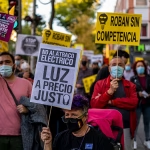The National Academies of Sciences, Engineering, and Medicine recently established a consensus definition of long COVID as an infection-associated chronic condition that occurs after SARS-CoV-2 infection and lasts for at least 3 months, affecting one or more organ systems. However, disputes within the medical community about a disease with a wide range of symptoms are expected to persist. Nearly 18% of adults in the U.S. have experienced long COVID, with symptoms including fatigue, shortness of breath, cough, joint pain, and more.
The Centers for Disease Control and Prevention acknowledge the NASEM definition of long COVID, but confusion may still arise regarding testing, diagnosis, and treatment. Dr. David Cutler, a family medicine physician, points out that while the new definition clarifies previous variations, controversy may persist due to the lack of a simple diagnostic test. Dr. Steve Allder, a neurologist, notes the complexity of creating an umbrella definition for a disease with diverse experiences and symptoms, leading to frustration among medical professionals and patients alike.
With no cure for long COVID, reassurance remains a crucial aspect of treatment. Patients presenting symptoms should undergo thorough evaluation to exclude other conditions, receive a specific diagnosis of long COVID, and be informed of the generally favorable long-term prognosis. However, Allder emphasizes the challenges of narrowing down a wide range of symptoms to a single cause based on patient self-reports, particularly when skepticism from the medical profession is pervasive.
The ongoing dispute surrounding long COVID extends beyond public discourse to clinical settings, where patients often face significant skepticism from healthcare providers. Allder describes the impact of long COVID as devastating, particularly for young individuals and their families, but highlights the lack of readiness within the medical system to address the complexity of the condition. Cutler acknowledges the difficulty of diagnosing a disease with numerous symptoms and emphasizes the persistent disagreement over optimal management strategies for long COVID.
In addition to the challenges of diagnosing and treating long COVID, debates continue over the role of vaccines in reducing its incidence. While some studies suggest a potential benefit, conflicting information remains about the impact of certain medications on long COVID risk factors. Cutler cautions that personalized care for long COVID patients is hindered by the lack of conclusive evidence and consensus within the medical community. As research and understanding of long COVID evolve, addressing these complexities will be essential in providing effective care and support for individuals affected by the condition.











